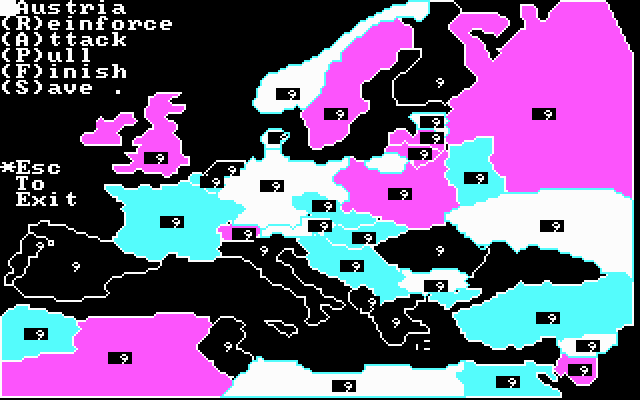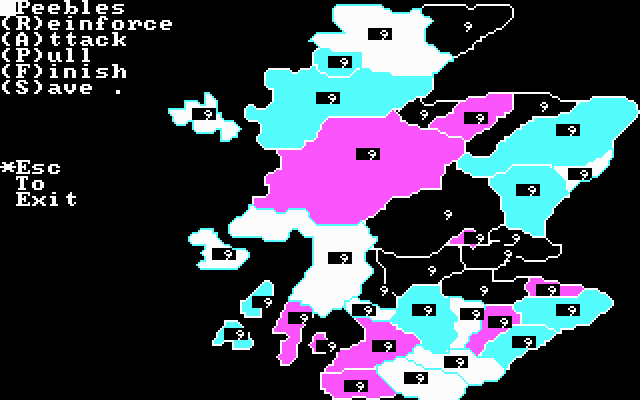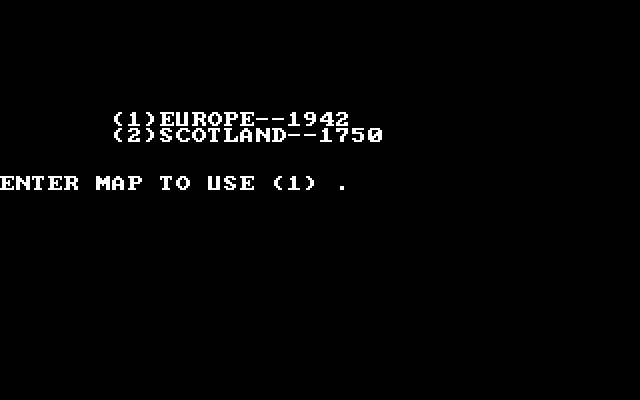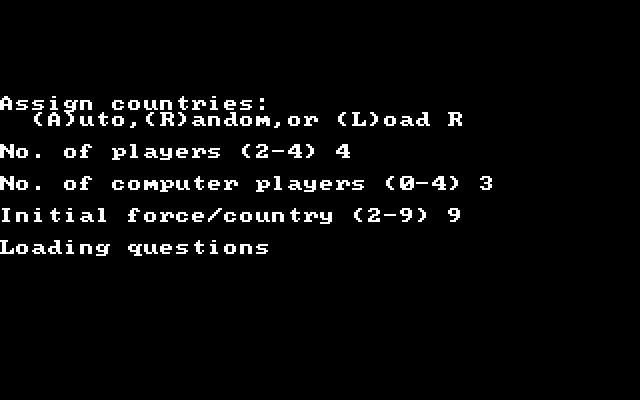Retro Replay Review
Gameplay
Call to Arms delivers a crisp, board game–inspired strategy experience, putting you in full command of military forces as you vie for control of every region on the map. The turn-based structure is intuitive: simply select a unit, plot its movement path, and resolve engagements when opposing forces collide. This straightforward approach lowers the barrier to entry for newcomers while still rewarding careful planning and foresight.
With two distinct scenarios—Europe 1942 and Scotland 1750—the game offers contrasting strategic flavors. In Europe 1942, modern weaponry and large-scale maneuvers dominate, emphasizing combined arms and supply line control. Meanwhile, the Scotland 1750 map trades tanks for musket-armed regiments and hillsides, demanding tighter formations and focused offense. Both maps challenge you to adapt your tactics to terrain and technology.
Players can choose from two to four factions, each controlled by humans or the CPU, ensuring that every match feels dynamic. The AI opponents make thoughtful moves and seize opportunities, though their aggression level can be dialed up or down to suit different skill levels. Multiplayer matches add another layer of tension, as human unpredictability forces you to rethink textbook strategies on the fly.
Beyond the core conquest mode, Call to Arms includes optional rule tweaks—such as fog of war and variable reinforcements—that inject fresh variety into repeated plays. This modular design captures the essence of customizable tabletop wargaming, giving veteran strategists the freedom to craft their perfect challenge without overcomplicating the basic ruleset.
Graphics
Graphically, Call to Arms embraces a clean, minimalist aesthetic reminiscent of classic war board games, favoring clarity over flashy effects. The hex-based map tiles are distinct and color-coded, making it easy to track control zones and plan your next push. Units appear as crisp icons, each bearing a simple yet readable symbol denoting type and strength.
While you won’t find high-fidelity 3D models or cinematic battle sequences here, the game’s restrained visual style serves its purpose well. Animations are purposeful: move animations show units gliding from hex to hex, and combat is summarized with clear numerical outcomes and casualty markers. This streamlined presentation keeps the focus squarely on strategy rather than spectacle.
The user interface is both functional and unobtrusive. Contextual tooltips appear when you hover over units or regions, quickly conveying movement costs, defensive bonuses, and victory conditions. A slick minimap offers a bird’s-eye view of the entire battlefield, enabling you to track multiple fronts without losing detail.
Graphical customization options are modest but useful. You can toggle gridlines, adjust color palettes for colorblind accessibility, and even switch between classic and modern map overlays. These tweaks ensure that players of all preferences can tailor the visual experience to their liking while keeping the strategic information front and center.
Story
Unlike narrative-heavy strategy titles, Call to Arms opts for scenario-driven play, letting historical contexts frame your battles rather than an overarching plot. This design choice underscores the game’s roots in traditional wargaming, where players write their own stories through tactical decisions on the map.
In the Europe 1942 scenario, you’ll feel the weight of mid-century conflict as you command motorized divisions across French plains and German forests. The sparse briefing text touches on supply shortages and shifting alliances, but it’s your victories (or defeats) on the board that create the real drama. Each campaign unfolds organically based on your tactical acumen.
The Scotland 1750 map, by contrast, captures the rugged Highlands, where muskets and cavalry reign supreme. Rolling hills and narrow passes set the stage for ambushes and flanking maneuvers. Although there’s no branching storyline, the setting itself evokes period flavor, immersing you in a bygone era of warfare through geography and unit composition alone.
Ultimately, Call to Arms tells its story through player-led skirmishes. Every deployment of infantry or charge of cavalry becomes a narrative beat, and alliances shattered by conquest feel personal. The absence of cutscenes or character arcs may disappoint those seeking RPG-style storytelling, but fans of sandbox strategy will appreciate the open-ended drama at the heart of each match.
Overall Experience
Call to Arms succeeds as a tight, accessible turn-based strategy game that captures the spirit of tabletop wargaming without overloading newcomers. Its streamlined mechanics, paired with two historically inspired maps, strike a balance between depth and approachability, making it ideal for both casual gamers and hardened strategists.
The AI strikes an admirable balance between challenge and fairness, and multiplayer matches deliver unpredictable, tense engagements that keep you coming back. Optional rule customizations further extend replay value, allowing you to tweak scenario settings and experiment with different tactical philosophies.
Though the visuals adopt a minimalist board game style, the clarity and purpose behind every design choice ensure that nothing distracts from strategic decision-making. If you value thoughtful planning, modular scenarios, and pure competition over flash and flare, Call to Arms offers a rewarding package.
For buyers seeking a focused, historically flavored conquest game that feels like a well-crafted tabletop experience on PC, Call to Arms delivers. Its mix of strategic depth, scenario variety, and accessible rules make it a standout choice for anyone looking to test their mettle on turn-based battlefields.
 Retro Replay Retro Replay gaming reviews, news, emulation, geek stuff and more!
Retro Replay Retro Replay gaming reviews, news, emulation, geek stuff and more!








Reviews
There are no reviews yet.